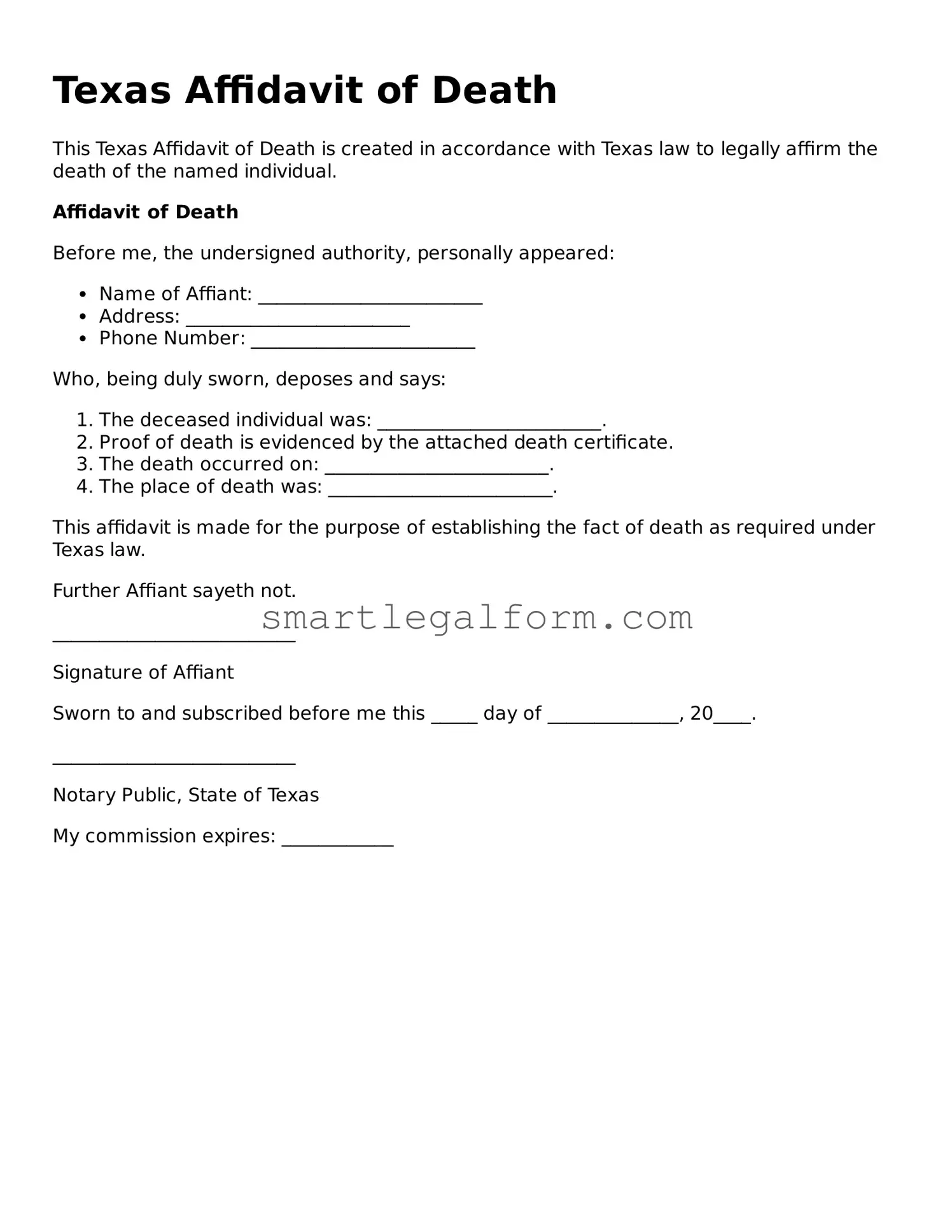Printable Texas Affidavit of Death Document
The Texas Affidavit of Death form is a legal document used to declare the death of an individual and to provide necessary information for the transfer of property or assets. This form can simplify the process for heirs and beneficiaries, ensuring that the deceased's estate is handled appropriately. If you need to fill out this important document, click the button below to get started.
Fill Out Your Form Online
